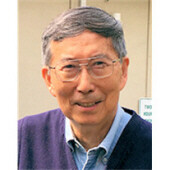

Raymond Chang
d. April 10, 2017
the Halford R. Clark Professor of Natural Sciences, emeritus, died last week on Bainbridge Island, Washington. He was born on March 6, 1939 and was 78 years of age.Raymond lived under the shadow of war for most of his childhood. Following the Japanese invasion of China in 1937, his parents, along with their eight children, moved from Shanghai to the relative safety of Hong Kong, then a British Crown Colony. Raymond was born there in 1939. When Japanese troops entered Hong Kong in late 1941, the family returned to Shanghai, where they lived through Japanese occupation and liberation by Allied troops. The civil war that followed and the founding of the People's Republic of China caused the family to flee again-- back to Hong Kong.At age 16, Raymond traveled by himself to London, following an older sister. After a preparatory course in English, he entered Woolwich Polytechnic College at the University of London to study chemistry. He received his bachelor's degree in 1962 with First Class Honors and sailed to America aboard The Queen Mary to begin graduate studies at Yale, where he received both his master's and Ph.D. He completed his postdoctoral research at Washington University in St. Louis, and spent one year teaching at Hunter College before coming to Williams in 1968 on what was supposed to be a three-year limited appointment.As the only faculty member from China at the time, Raymond often went outside of his field to explain Chinese culture and language to curious students. For several years he taught a popular Winter Study course, a one-month introduction to Chinese language and calligraphy. When he tried to gather background materials for his course, he found no book on the Chinese language that was written for the general reader. He and his wife Margaret, a librarian and writer who taught children's literature at MCLA, then wrote a popular introduction to the Chinese language, Speaking of Chinese. Raymond drew on his boyhood experiences to select the proverbs, describe Chinese grammar, and write the calligraphy used in the text.Raymond was known by several generations of students as an outstanding teacher. They loved him for his clear, concise delivery that made it as easy as possible to grasp even the most complex and arcane elements of thermodynamics. His classes were invariably peppered with gently humorous stories, and no joke was too corny to tell or failed to capture his delighted laughter. He was a master of performing classroom demonstrations and was known for inventing several that are still favorites in the Chemistry Department.He was also a warm and approachable teacher in person, and his consummate skill and flair as a science educator meant that his impact on the training of new members of the chemistry faculty was particularly important. At least six current members of the department credit him with having provided essential mentoring at some point in their development as teachers. For some, this meant learning the inner workings of planning a lecture on a dense and abstract mathematical topic, although these sessions often initially induced terror when the beginner realized Raymond conducted these masterful classes with his notes on a few 3x5 cards or the odd Post-It note. For others, Raymond might offer advice about handling a challenging classroom situation or about how to productively absorb and apply disappointing criticism to become a more positive and adaptable instructor. And for every one of these colleagues, even after he retired and the professional mentoring was offered over the telephone, Raymond remained an unquenchable source of enthusiasm for the beauty of scientific ideas, the power of experimental surprises, and the deep satisfaction that comes from sharing these with young minds.Raymond also taught countless students and chemistry teachers beyond Williams through his many textbooks. A prolific author, he produced chemistry textbooks for nearly 50 years, throughout his career at Williams and then during his retirement as professor emeritus. Among the many textbooks he authored, his widely used general chemistry textbook, first published in 1976 and now in its 12th edition, set the standard for general chemistry textbooks around the world. Simply referred to as "Chang" among the chemistry community, his text was translated into eight languages. He wrote textbooks on spectroscopy, physical chemistry, and industrial chemistry, as well.He also drew from his childhood experiences and co-authored children's books with Margaret. He is best remembered for In the Eye of War, a novel for children about a Chinese family living in occupied Shanghai. Also with his wife, he created the texts for several picture books based on traditional Chinese tales, among them The Cricket Warrior: A Chinese Tale and The Beggar's Magic: A Chinese Tale.In addition to his wife of 49 years, Margaret, he is survived by a daughter, Elizabeth Chang and her husband, Peter Stiepleman of Columbia, Mo.; his grandsons, Isaac, Ezra, and Jacob; a sister, Rita Wong of Upland, Calif.; and many nieces, nephews, grand-nieces and grand-nephews living on both sides of the Pacific Rim. Our thoughts are with Raymond's family and many friends.Regards,Adam FalkPresident
Guestbook
Visits: 15
This site is protected by reCAPTCHA and the
Google Privacy Policy and Terms of Service apply.
Service map data © OpenStreetMap contributors



